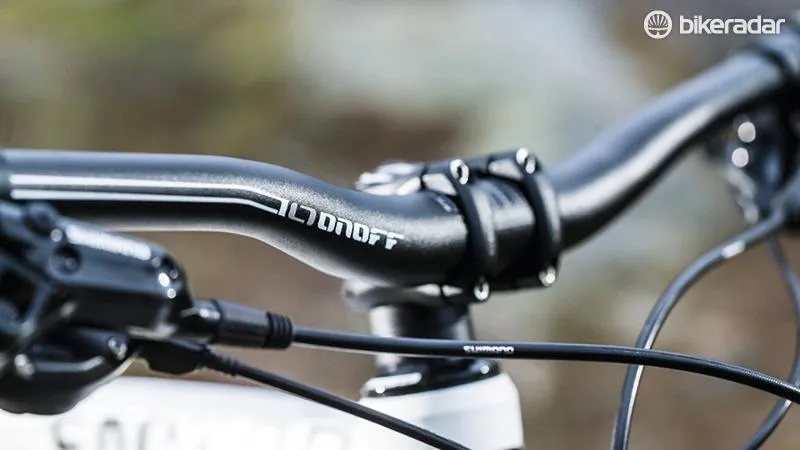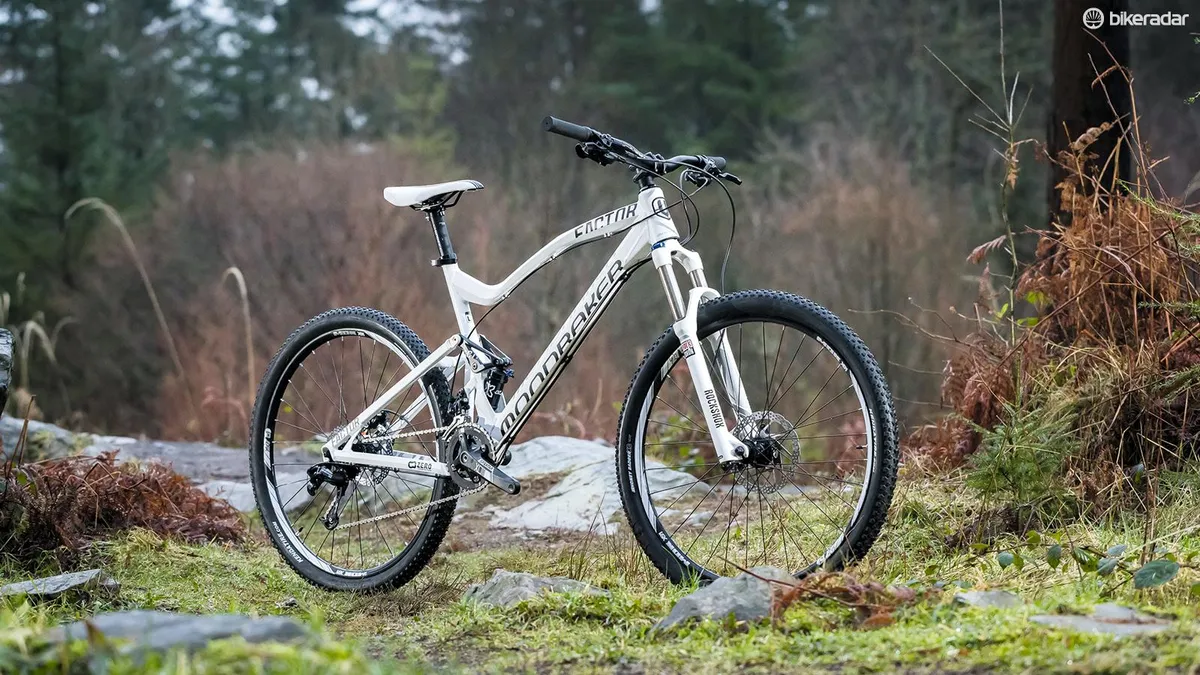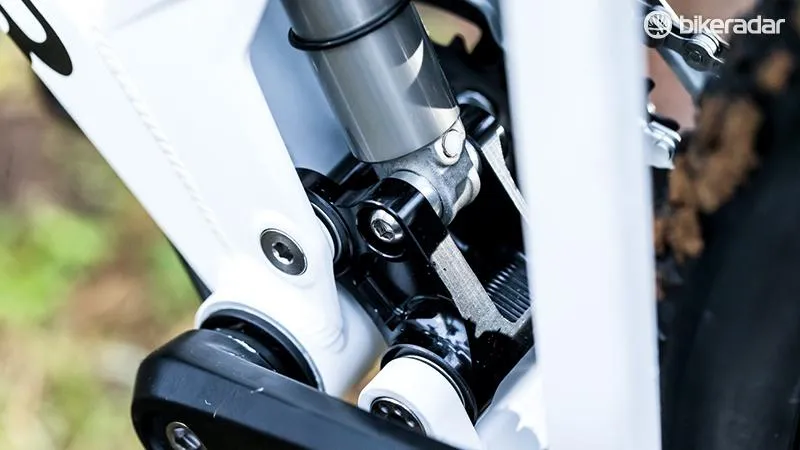Mondraker came about as close as you can to a revolution in bike design when it cooked up its Forward Geometry concept back in 2011. For years, aggressive riders have been sizing-up their frames and fitting stumpy stems in a bid to achieve more confident-handling rides. Mondraker took this to its logical conclusion: pairing super-short 10-30mm stems, with extra-long top tube lengths – around 50mm longer than average for each frame size.
Now this concept has trickled down to more entry-level bikes. Applying Forward Geometry to a shorter-travel bike with a more budget spec is an interesting proposition. Will the radical geometry make up for the relative shortcomings in spec and suspension, or will the confident handling write cheques that the components can’t cash? We’ve been out thrashing the base-model Mondraker Factor to try and chase down some answers.
Frame and equipment: mixed bag of kit is frustrating in places
The crux of the spec list is the extra-short 30mm stem, which allows the bars to remain in a comfortable positon despite the extra-long top tube. 10mm or 20mm stems are also available if you want to experiment with the limits of Forward Geometry.
Swinging a leg over the Factor, the benefits aren’t immediately obvious. Even taking into account the 30mm stem, the reach is roomy, and when out of the saddle, it’s prone to bobbing under hard pedalling, especially in the big ring. Happily the X-Fusion O2 RL shock has a lockout lever to cut this down. The 14.6kg (32.2lb) mass means you’re unlikely to win any hillclimbs on the Factor, but the wide-range 2x9 gearing and fairly steep 74.5-degree seat angle ensure you’ll get there.

We'd have liked to see even wider bars as standard for extra leverage
The 740mm bars offer a decent width for aggressive manhandling of the bike, but we’d love to see some even wider ones on there – you can always cut bars down, but you can’t make them longer! Taller riders may also wish to fit higher-rise bars as the short head tube and low-rise bars result in a low cockpit, which some may find diminishes the confidence-inspiring handling.
We had no serious shifting issues from the SRAM/Shimano collaboration offered here. The 2x9 setup provides an adequate range and fairly smooth action, although the Suntour XCM chainset didn’t facilitate the smoothest front shifts.

The Suntour chainset is an easy place to drop weight
The fast-rolling Kenda Honey Badger tyres let the side down, however. Combined with suspension that needs to locked out to prevent excessive bob, traction is hard to come by. The hard compound rubber even had us spinning-up on wet tarmac, and once you head off-road the problem is only going to get worse.
Ride and handling: frame benefits shine through spec limitations
It’s on the descents when the Forward Geometry shines through. Pushing this bike hard on steep, rocky descents, the long front-centre length gives plenty of room to breathe, offering superb stability and confidence for a bike of this travel.

The frame is confidence inspiring, but the tyres definitely aren’t
The Zero multi-link rear suspension soaks up terrain admirably. It’s active and supple, leaving the shock to do a sterling job of soaking it all up. Overall it’s impressively controlled, ramping up nicely to prevent excessive bottom out. Up front, the RockShox XC30 Solo Air fork affords the adjustability and progressiveness you only get with an air spring. It’s not incredibly well damped, nor very stiff due to the QR axle, but the Forward Geometry gets around this to some extent. Rather than feeling let down by a ropy fork under your elbows, the extra-long frame puts the fork out in front, boosting stability and keeping the flexy fork from becoming an issue.
There is no way around the ropy rubber, though. The lack of shoulder tread discourages aggressive cornering; lean the bike over into a bend and the grip gives way with little fight. On hardpack trails, wheel flex becomes noticeable when pushing hard. The Shimano M-355 brakes, though reliable, are a little wooden and under–powered, discouraging single-finger braking. All this dampens down the hard riding potential of the frame.

The Factor's frame has plenty of upgrade potential
All that said, the Forward Geometry concept translates pretty well into this bike. While performance on the steeper, rougher trails for which Forward Geometry is most advantageous could be massively improved with a few spec upgrades, the geometry makes the most of the spec available. In a straight line, the positioning of the front axle – far out in front – boosts confidence and stability.
In the corners, the story is a bit more complicated. As an entry-level bike, the needs of the less experienced rider must be considered. The long front-end combined with a fairly short (430mm) chainstay requires you to deliberately weight the front wheel in the bends to get the best cornering performance. Another inevitable consequence of the lengthy top tube is an extended wheelbase, which needs a little more muscle to get it round tight corners. This demands good technique and can take a while to master. The Forward Geometry configuration is compatible with this travel and price point, but you have to ride aggressively to get the most out of it.











